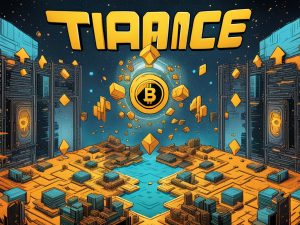Regulatory clarity fuels innovation
Ripple, a blockchain payments protocol, and TRM Labs, a blockchain intelligence company, recently held a discussion on the importance of regulatory clarity in the decentralized finance (defi) ecosystem. Participants included representatives from the International Organization of Securities Commission (IOSCO) and the Monetary Authority of Singapore (MAS). The focus was on regulatory innovation as a means to promote responsible adoption.
The lack of uniform regulations across jurisdictions in the defi space creates opportunities for regulatory arbitrage. To address this, the roundtable emphasized the need for a worldwide consortium and greater data sharing among regulatory bodies. The Commodity Futures Trading Commission (CFTC) also recognizes the importance of data in reducing risks and achieving financial stability.
One key idea discussed was “compliance by design,” which involves integrating compliance requirements into defi protocols through smart contracts. This approach aims to simplify regulatory procedures, reduce costs, and enhance the quality of financial products for end-users.
Ripple’s response to exploitation
During these discussions, Ripple faced a setback when Chris Larsen’s personal wallet was hacked. However, it is important to note that this breach targeted Larsen’s personal accounts and not Ripple’s infrastructure or XRP token. Binance CEO Richard Teng took swift action to freeze the hacker’s address, highlighting collaboration within the industry.
XRP Ledger’s AMM feature faces challenges
After introducing the Automated Market Maker (AMM) feature to the XRP Ledger through the XLS-30D amendment, Ripple’s development team encountered technical complications. Integration tests revealed potential delays in AMM transactions when trading fees fell below 0.01%. Ripple promptly addressed this issue and expressed their commitment to refining newly added functionalities.
Following news of the hack, the value of XRP dropped to $0.48, the lowest since October 2022. This led to some large investors, or whales, adjusting their positions. Data from Santiment’s Supply by Addresses tool shows a decrease in the number of wallets holding at least one million XRP, indicating that some big investors are selling or reducing their holdings.
Currently, XRP is priced at around $0.52, representing a 2.1% decline in the last seven days according to CoinGecko.
Hot Take: Ripple Advocates for Regulatory Clarity in Defi
Ripple and TRM Labs recently highlighted the importance of regulatory clarity in the defi ecosystem during an open discussion. The lack of uniform regulations across jurisdictions creates opportunities for regulatory arbitrage, emphasizing the need for a worldwide consortium and increased data sharing among regulatory bodies. Integrating compliance requirements into defi protocols through smart contracts could simplify regulatory procedures and improve financial product quality for end-users. Ripple faced a setback with Chris Larsen’s personal wallet being hacked, but it didn’t impact Ripple’s infrastructure or XRP token. Additionally, Ripple promptly addressed technical complications with the AMM feature on the XRP Ledger. Despite these challenges, XRP’s value has experienced a decline in recent days.


 By
By
 By
By
 By
By
 By
By
 By
By